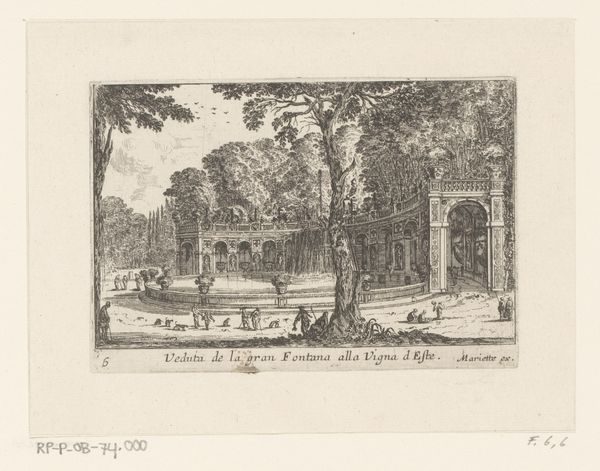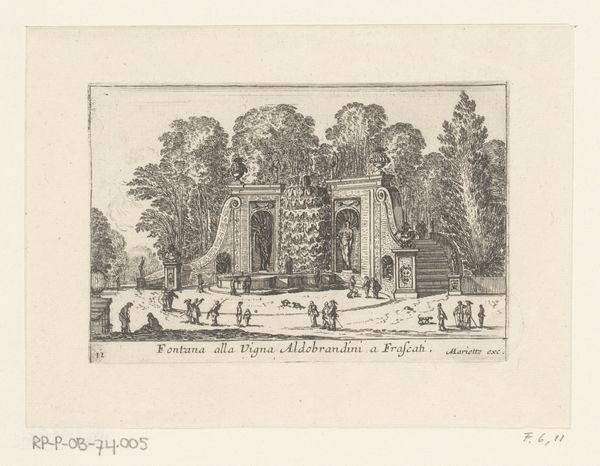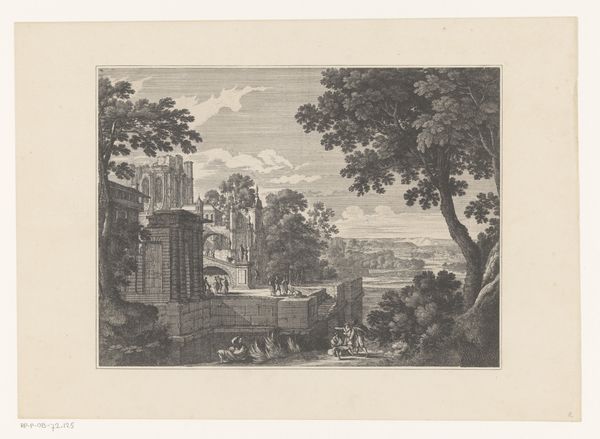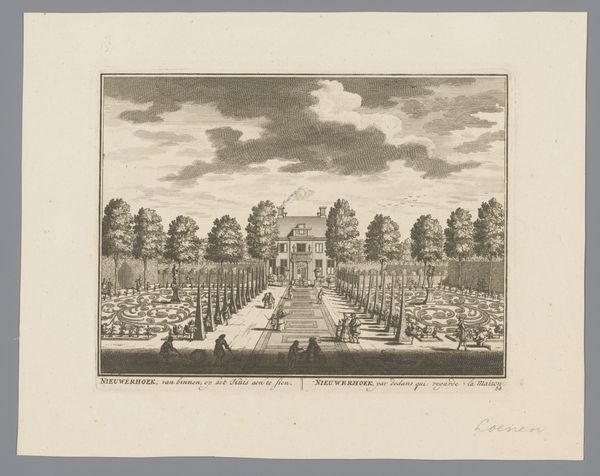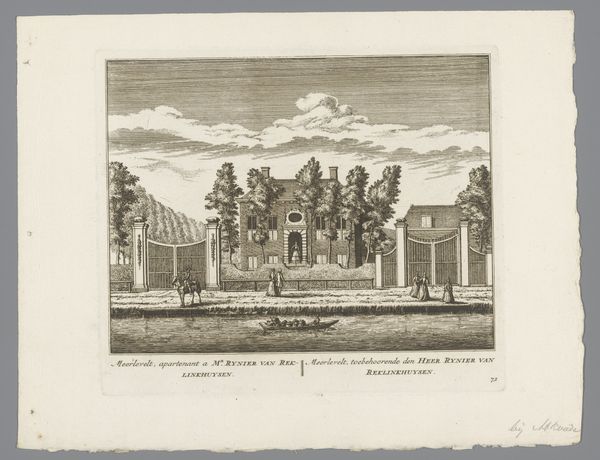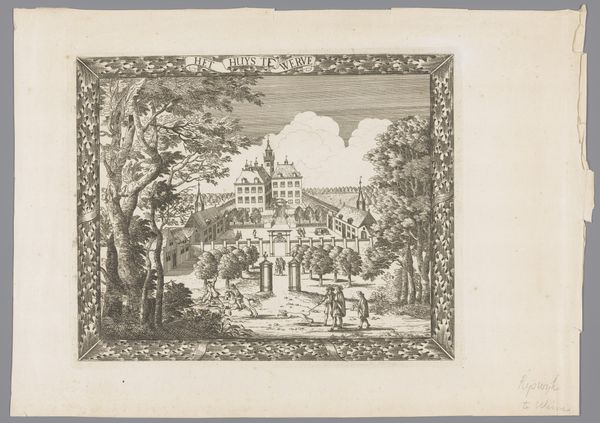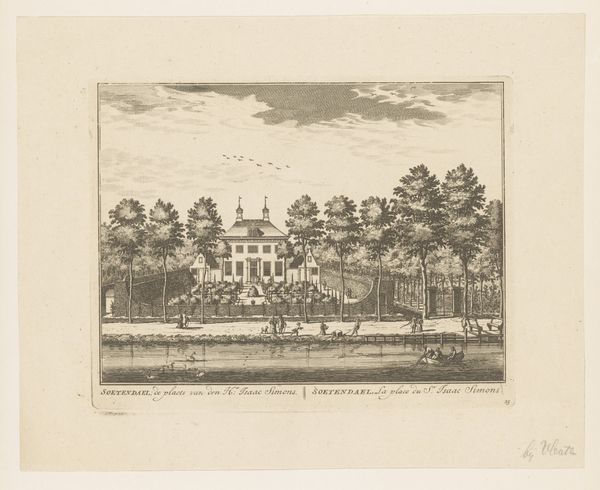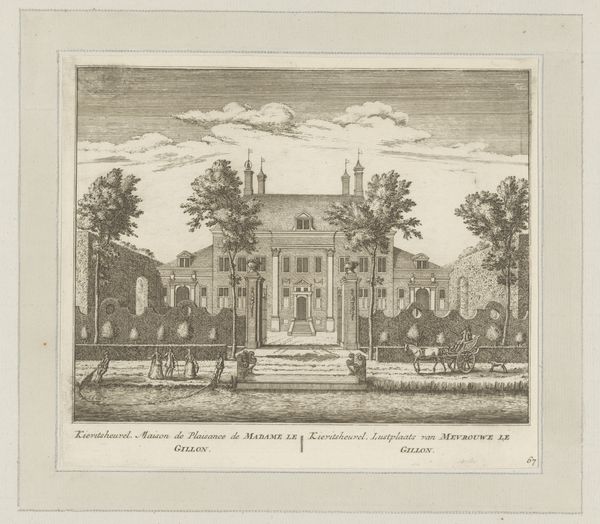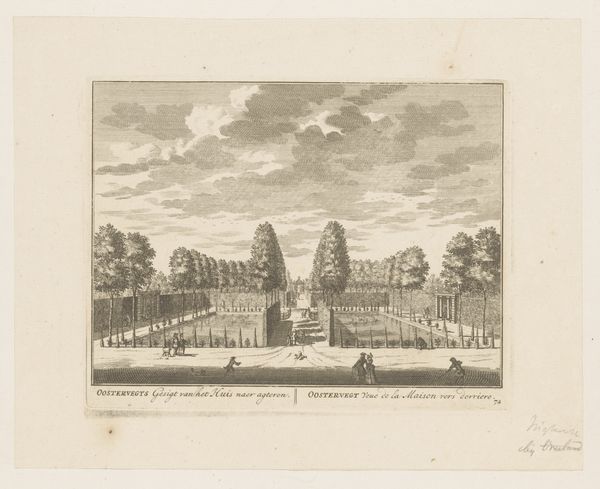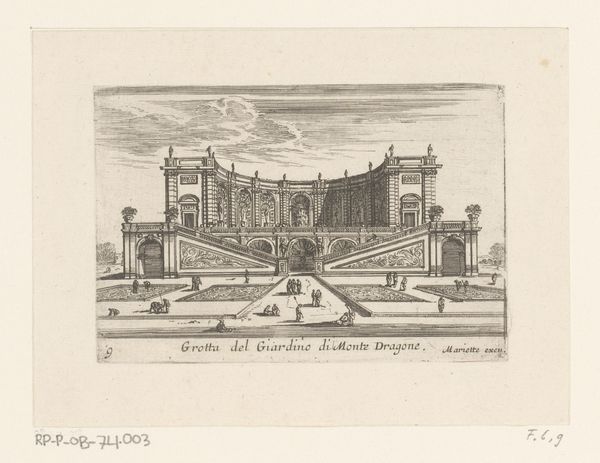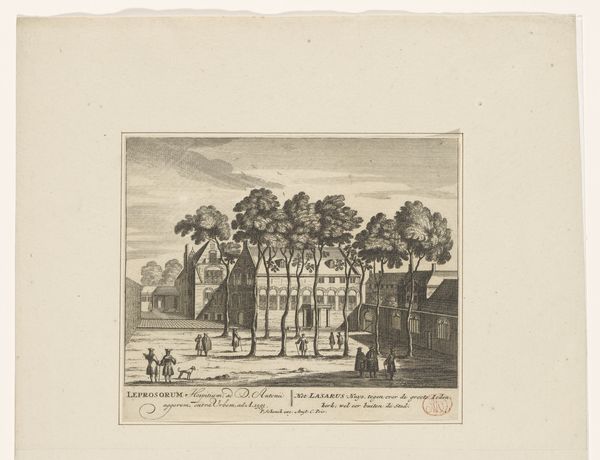
etching
#
baroque
#
etching
#
landscape
#
etching
#
cityscape
#
history-painting
Dimensions: height 81 mm, width 122 mm
Copyright: Rijks Museum: Open Domain
Editor: This etching from 1646, by Israel Silvestre, depicts the Dragon Fountain at the Villa d'Este. The detailed rendering of the fountain is impressive! How do you read this piece within its historical context? Curator: I see it as a powerful commentary on control and spectacle in the Baroque era. This image of the Dragon Fountain reflects not just the wealth and power of the aristocracy, but also how that power was carefully constructed and displayed. How do you think the artist uses visual language to reinforce this hierarchy? Editor: The high vantage point and detailed rendering do seem to suggest control, almost like looking down on a stage. It's like the viewer is positioned as someone of status. Curator: Exactly! And consider the use of mythological creatures like dragons. What function did they play in asserting dynastic legitimacy and intimidating rival political entities? Also, how does this meticulously crafted image circulate ideas about empire and domination across Europe, especially considering that prints were often disseminated widely? Editor: It sounds like this isn't just a picture, but a political statement broadcast to a large audience through reproducible media like etchings. Did Silvestre have a political agenda or a position in society? Curator: Precisely. Silvestre was connected to prominent courtly circles and aristocratic patrons, so he might have enjoyed making art about powerful and wealthy men, and in the context of ongoing tensions, it certainly offers us insights into the workings of 17th-century power. It reveals how representations of grand constructions became tools in broader socio-political conflicts. Editor: That’s given me a lot to think about. I went into this just seeing a pretty fountain, but now I’m seeing something more sinister bubbling under the surface. Curator: I’m so glad. And sometimes looking closely helps expose these undercurrents. I am so thrilled to be here, discussing art history through a critical, social, and historical lens.
Comments
No comments
Be the first to comment and join the conversation on the ultimate creative platform.
